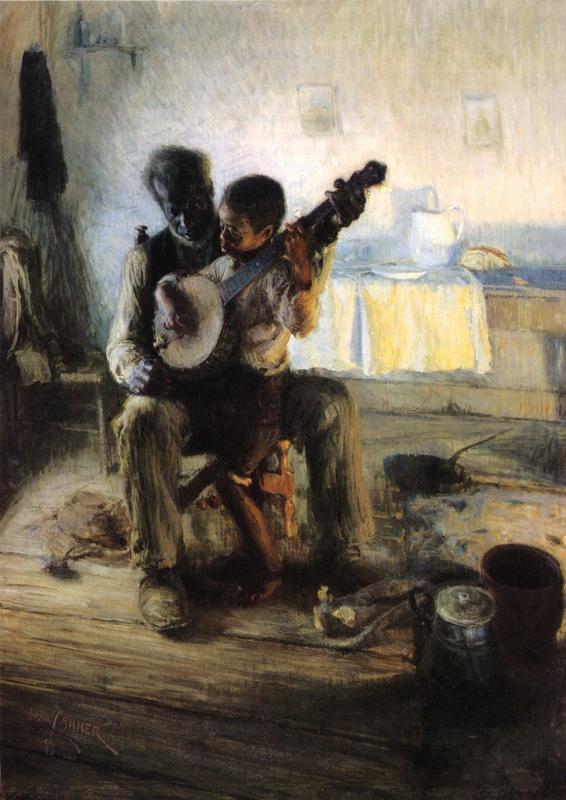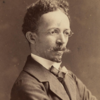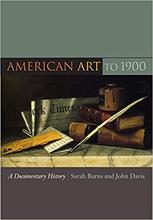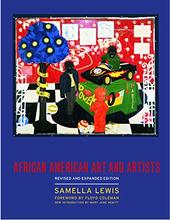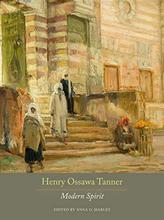More about The Banjo Lesson
- All
- Info
- Shop

Contributor
A union of European painting tradition and American folklore, The Banjo Lesson acts as Tanner’s most famous work, vindicated by history.
This painting was originally titled The First Lesson. And it was a lesson for Tanner, especially.
Having spent his formative years as an artist abroad in Paris, a bout of typhoid fever and dwindling funds sent him back to the States in 1889. He took up a teaching position at Clark University in Atlanta, from where his doctor advised him to take a vacation. His locale of choice: the Blue Ridge Mountains of North Carolina. It was there he learned the plight and poverty of America’s black working class firsthand.
Tanner was the was the child of two members of a growing African-American middle class in Pittsburg, highly educated and with more social mobility than any of his race in lower economic strata could ever hope to achieve. He was the first black man to make a name for himself as an artist in a realm dominated by whites. Yet despite the fame he amassed and the admiration he gained in Europe, he could not escape the context of his skin color in America. His mother was an ex-slave freed by the Underground Railroad and his middle name was taken from Osawatomie, Kansas, the town where the abolitionist John Brown squared off against pro-slavery partisans on August 30, 1856. Much of American media at this time reduced black people to cartoonish stereotypes. His past and present were framed by systemic racism. Redeeming the image of the African-American experience to a more dignified state was the calling Tanner would answer.
The Banjo Lesson was born from a series of photographic studies and an etching done for the fifteenth issue of Harper’s Young People in 1893. In them, an elderly black man was teaching a child how to play the banjo, an iconic instrument of the American South and a long-standing element of minstrel shows. The drawing was accompanied by a short story, “Uncle Tim’s Compromise on Christmas,” which was written by Ruth McEnery Stuart. The story gave context: the old man intended the young boy, his grandson, to inherit his banjo, his most prized possession, guiding the boy as he learned to play his first notes on it out of love and affection. Heartwarming were it not for the fact it was written to lampoon black vernacular in a way that made the characters accept their lowly status.
Tanner took that image, combined it with centuries of Renaissance and Flemish traditions, married it with the genre works of Thomas Eakins and William Sidney Mount, and spliced it with the spiritual solemnity of the Barbizon school to create a dignified, humanizing response to the Uncle Toms, blackface, and minstrel shows that pervaded American media at the time. The painting became Tanner’s first accepted work at the Salon a year later, and received high praise from his mentor, Mr. Benjamin-Constant. He wrote a letter to Frederick Douglass about it, overjoyed at its success. However, it was only one of many paintings in the Salon, and unlike a Top 40 hit single, did not propel him to heights of fame and fortune in the French art world. The waves it made were greater in America, yet were mixed: Tanner’s skill and respect for the subject, however beautiful, could not divorce it from the established stereotypes in his hometown of Philadelphia.
Discouraged by the lackluster reception both home and abroad, Lesson would serve as one of only two genre paintings about black people painted by an actual black person at the time. Tanner returned to France shortly after. However, the work served as the catalyst for Tanner’s focus on spirituality and an inspiration for his later, more popular Biblical works.
Sources
- Khalid, Farisa. 2016. “Henry Ossawa Tanner, The Banjo Lesson.” Smarthistory. September 9, 2016. https://smarthistory.org/tanner-banjo/.
- Stuart, Ruth McEnery. 1894. “‘Uncle Tim's Compromise on Christmas.’” Harper's Young People, December 31, 1894.
- Woods, Naurice Frank. 2018. Henry Ossawa Tanner: Art, Faith, Race, and Legacy. New York: Routledge.
Featured Content
Here is what Wikipedia says about The Banjo Lesson

The Banjo Lesson is an 1893 oil painting by African-American artist Henry Ossawa Tanner. It depicts two African-Americans in a humble domestic setting: an old black man is teaching a young boy – possibly his grandson – to play the banjo.
The painting was Tanner's first accepted entry into the Paris Salon, and has been held by Hampton University since 1894. The may be the first painting by an African American to paint other African Americans in a realistic, "genre" style of painting, in which scenes or events from everyday life are chosen for contemplation, including ordinary people engaged in common activities. The painting has elements of American Realism and of French Impressionism.
The painting refuted widely held stereotypes held by white people in the United States in the 1890s, by presenting African Americans outside of those stereotypes. There was no caricature, no expectation that the subjects were trying to entertain, no hint that the people in the painting were dangerous, or fawning or lacking intelligence. This was radical for the era.
Check out the full Wikipedia article about The Banjo Lesson

